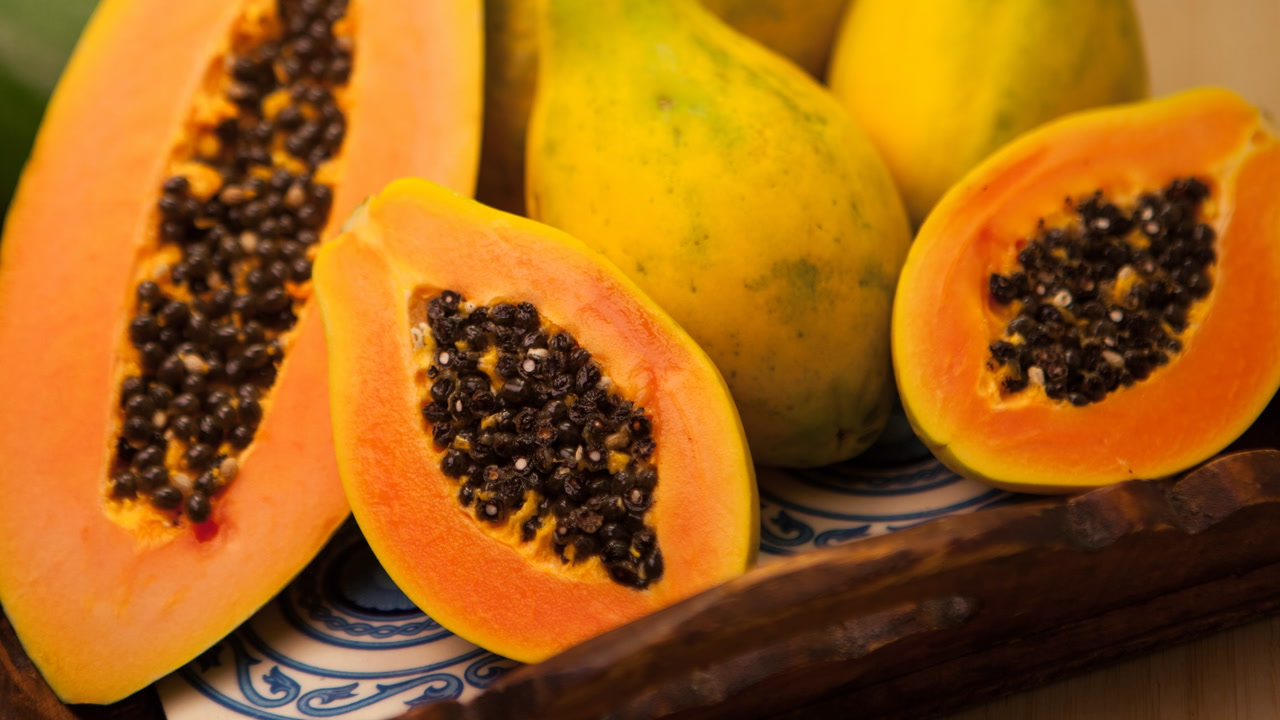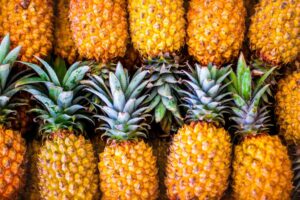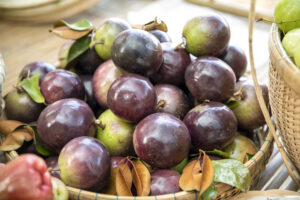How to Grow and Care for Papaya: A Complete Guide
Are you interested in growing your own tropical fruit at home? Papaya (Carica papaya) makes an excellent addition to your garden, whether you have a spacious outdoor area or just a sunny patio for container gardening. With its distinctive look, rapid growth, and delicious fruit, papaya is becoming increasingly popular among home gardeners in the warmer regions of the United States.
This comprehensive guide will walk you through everything you need to know about growing papaya plants, from seed selection to harvest, so you can enjoy this nutritious fruit right from your own garden.
Understanding Papaya: The Basics
Before diving into cultivation techniques, it’s important to understand what papaya is and what it needs to thrive. Papaya is a fast-growing, herbaceous perennial plant native to tropical America that can reach heights of 10-15 feet. Rather than being a true tree with wood, papaya has a hollow, fibrous stem that supports large, palm-like leaves and fruit that grows directly from the upper trunk.
According to the USDA Agricultural Research Service, papaya is rich in vitamins A and C, folate, and dietary fiber, making it not just delicious but highly nutritious as well.
Climate Requirements
Papaya plants love warmth and humidity. They grow best in USDA hardiness zones 9-11, with optimal growing conditions in zones 10 and 11. If you live in a colder region, don’t worry—you can still grow papaya in containers that can be moved indoors during winter months.
Growing Papaya from Seeds
One of the most rewarding ways to grow papaya is from seeds. Here’s how to get started:

Seed Selection and Preparation
- Choose fresh seeds: Extract seeds from a ripe papaya fruit. Rinse them thoroughly to remove the gelatinous coating, which contains growth inhibitors.
- Dry the seeds: Place the cleaned seeds on a paper towel and allow them to dry for 1-2 days.
- Scarification: Gently nick the seed coat with a nail file to help with germination.
Planting Papaya Seeds
- Prepare your growing medium: Use a well-draining potting mix with equal parts garden soil, sand, and compost.
- Sow seeds: Plant 2-3 seeds about 1/4 inch deep in each pot or cell.
- Provide warmth: Keep soil temperature between 70-80°F (21-27°C) for optimal germination.
- Keep moist: Water gently but consistently to maintain soil moisture without waterlogging.
Germination typically occurs within 2-3 weeks, though it can sometimes take longer. Once seedlings reach 4-6 inches in height with several true leaves, thin them to leave only the strongest plant.
Container Growing vs. Outdoor Planting
Papaya can be grown both in containers and directly in the ground. Here’s how to decide which method is best for you:
Growing Papaya in Containers
Container growing is ideal if you:
- Live in zones colder than USDA zone 9
- Have limited garden space
- Want to move your plants to protect them from weather extremes
Container Growing Guidelines:
- Choose the right container: Select a pot at least 15-20 gallons in size with adequate drainage holes.
- Use quality soil: Fill with a well-draining, nutrient-rich potting mix.
- Positioning: Place in a location that receives at least 6 hours of direct sunlight daily.
- Regular repotting: As your papaya grows, you may need to repot it annually to a larger container.
Outdoor Planting
If you live in a suitable climate (zones 9-11), planting papaya directly in your garden can yield excellent results:
- Timing: Plant in spring after all danger of frost has passed when soil temperatures are consistently above 60°F (15°C).
- Spacing: Space plants 8-10 feet apart to allow for proper growth.
- Soil preparation: Prepare the planting hole twice as wide as the root ball and incorporate compost or aged manure.
- Mulching: Apply 2-3 inches of organic mulch around the base, keeping it away from the stem to prevent rot.
Papaya Plant Care
Proper care of your papaya plants will ensure healthy growth and abundant fruit production.
Watering Requirements
Papaya plants need consistent moisture, especially during fruit development:
- Young plants: Water 2-3 times per week, ensuring soil is moist but not soggy.
- Established plants: Water deeply once per week, more during hot, dry periods.
- Container plants: Check soil moisture daily, as containers dry out faster than garden soil.
Fertilization Schedule
Papaya is a heavy feeder and requires regular fertilization:
| Growth Stage | Fertilizer Type | Application Rate | Frequency |
|---|---|---|---|
| Seedling (0-3 months) | 14-14-14 slow-release | 1 tbsp per plant | Monthly |
| Young plant (3-6 months) | 14-14-14 or organic equivalent | 2 tbsp per plant | Every 4 weeks |
| Mature plant (6+ months) | High potassium (10-10-30) | 1/4 cup per plant | Every 4-6 weeks |
| Flowering/Fruiting | High potassium (10-10-30) | 1/2 cup per plant | Every 4 weeks |
According to the University of Florida IFAS Extension, adjusting fertilizer applications based on soil testing will give best results.
Pruning and Support
While papaya doesn’t require extensive pruning, some maintenance will improve plant health:
- Remove yellow or diseased leaves: Cut them at the base to prevent disease spread.
- Limit height: If your papaya grows too tall for convenient harvesting, you can top the plant to encourage branching.
- Support: For container plants or those in windy areas, provide support with stakes or cages to prevent toppling.
Managing Pests and Diseases
Like all plants, papaya can be affected by various pests and diseases. Here are the most common issues and how to address them:
Common Pests
- Spider mites: Tiny pests that cause stippling on leaves. Treat with insecticidal soap or neem oil.
- Aphids: Small insects that cluster on new growth. Spray with strong water jets or apply neem oil.
- Fruit flies: Can damage ripening fruit. Use fruit fly traps or harvest fruit slightly early.
Common Diseases
- Papaya ringspot virus: Causes stunted growth and ring spots on fruit. No cure exists, so remove and destroy infected plants to prevent spread.
- Root rot: Caused by overwatering or poor drainage. Ensure proper drainage and avoid overwatering.
- Powdery mildew: White powdery substance on leaves. Treat with fungicides and improve air circulation.
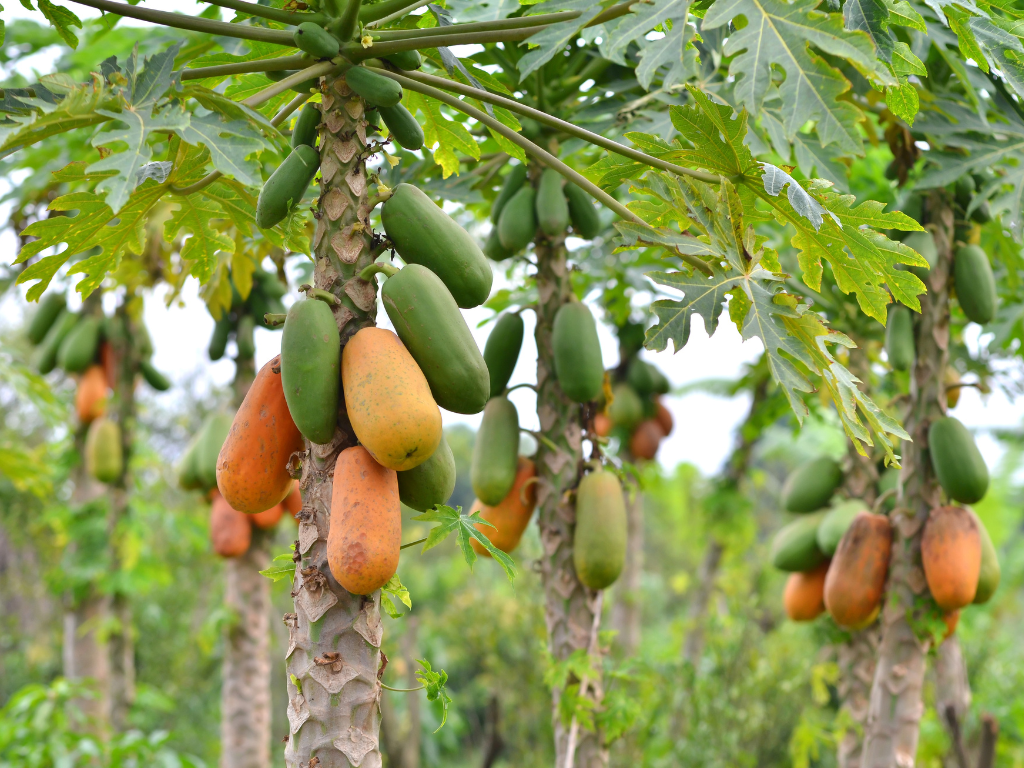
Pollination and Fruit Production
Papaya plants can be male, female, or hermaphrodite (having both male and female reproductive parts):
- Male plants: Produce only flowers, no fruit
- Female plants: Produce fruit only when pollinated by a male plant
- Hermaphrodite plants: Self-pollinating and most desirable for home gardeners
For reliable fruit production, plant at least 3-5 papaya plants to increase the chances of having both male and female (or hermaphrodite) plants. If growing in containers, you can hand-pollinate by transferring pollen from male to female flowers using a small brush.
Harvesting and Using Your Papaya
With proper care, papaya plants typically begin producing fruit within 10-12 months of planting. Here’s what you need to know about harvesting and enjoying your homegrown papaya:
When to Harvest
Papayas are ready to harvest when:
- The skin turns from green to yellow-orange (depending on variety)
- The fruit yields slightly to gentle pressure
- Some latex (white sap) still exudes from the stem
Harvesting Methods
- For immediate consumption: Wait until the fruit is mostly yellow with a slight give when pressed.
- For longer storage: Harvest when there’s just a hint of yellow, then allow to ripen at room temperature.
- Cutting technique: Use a sharp knife or pruners to cut the fruit stem, leaving a small portion attached to the fruit.
Post-Harvest Handling
- Ripening: Place unripe papayas at room temperature until they reach desired ripeness.
- Storage: Ripe papayas can be refrigerated for up to a week.
- Freezing: Cut ripe papaya into chunks and freeze for smoothies or future use.
Culinary Uses
Your homegrown papayas can be enjoyed in numerous ways:
- Fresh eating: Simply cut in half, scoop out seeds, and enjoy with a squeeze of lime.
- Salads: Add cubed papaya to fruit or green salads.
- Smoothies: Blend with yogurt, banana, and ice for a refreshing drink.
- Desserts: Use in pies, sorbets, or as a topping for ice cream.
- Savory dishes: Green (unripe) papaya can be used in Southeast Asian salads and stir-fries.
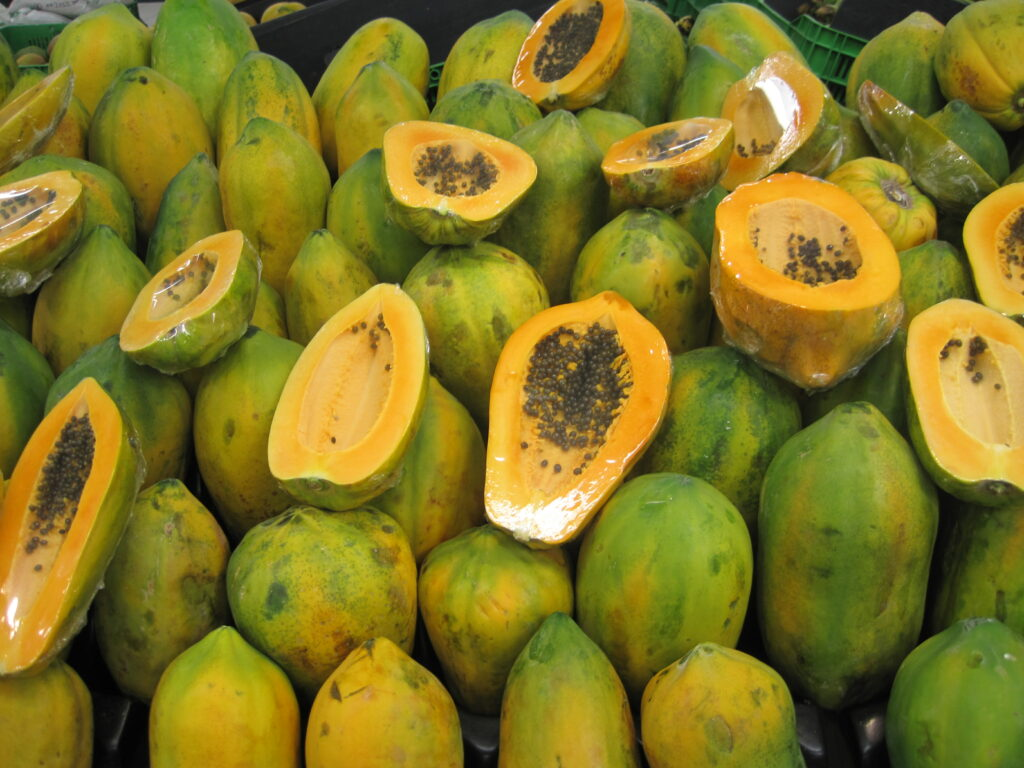
Growing Papaya for the US Market
If you’re interested in commercial papaya production, the US market offers promising opportunities, particularly in states like Hawaii, Florida, California, and parts of Texas.
Market Potential
The demand for domestically grown papaya has been steadily increasing in the US, with consumers seeking fresh, local options rather than imported fruit. According to the USDA Foreign Agricultural Service, the US imports significant quantities of papaya annually, indicating market potential for domestic growers.
Commercial Considerations
- Variety selection: ‘Red Lady’, ‘Maradol’, and ‘Tainung’ varieties are popular in the US market.
- Scale: Start small and expand as you gain experience and market access.
- Regulations: Check with your state’s department of agriculture regarding regulations for commercial fruit production.
- Organic certification: Consider organic growing practices to access premium markets.
Conclusion
Growing papaya at home can be a rewarding experience that provides you with delicious, nutritious fruit while adding a tropical touch to your garden or patio. Whether you’re growing in containers on a balcony or have space for multiple plants in your backyard, following the guidelines in this article will help you successfully cultivate this remarkable tropical plant.
Remember that patience is key—while papaya grows quickly compared to many fruit trees, it still takes several months from seed to fruit. The wait, however, is well worth it for the unique flavor and satisfaction of growing your own tropical fruit, even in temperate regions of the United States.
Start your papaya growing journey today, and within a year, you could be enjoying the fruits of your labor straight from your own garden!
